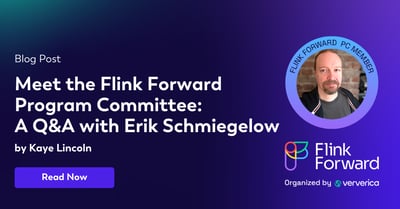Blog
Apache Flink, stream processing, event-driven applications, and more.

Ververica Announces Strategic Collaboration with AutoMQ: Empowering Enterprises to Unlock Real-Time Data Value Efficiently
Ververica and AutoMQ partner to deliver cost-efficient, high-performance ...

Modernizing Sports Betting with Real-Time Data Streaming
Discover how real-time data streaming is transforming sports betting with...

Ververica Expands Its Cloud Offering on Microsoft Azure
Ververica Cloud now offers a managed service on Microsoft Azure, providin...

Global Bank Achieves 90% Cost Savings with Mainframe Offloading!
Discover how a leading global bank achieved 90% cost savings with Ververi...

Ververica’s Foolproof Path to AI: Why Streaming ETL Fuels Next-Gen Machine Learning
Ververica’s Unified Streaming Data Platform enables real-time machine lea...

Ververica Announces Partnership with Aiven: Empowering Leading Enterprises to Create Value from Data in Real-Time
Ververica and Aiven partner to unlock real-time streaming data together.

Preventing Blackouts: Real-Time Data Processing for Millisecond-Level Fault Handling
Leverage real-time data processing for instant power outage detection. Im...

Real-Time Fraud Detection Using Complex Event Processing
Real-time fraud detection with Complex Event Processing helps identify su...

Meet the Flink Forward Program Committee: A Q&A with Erik Schmiegelow
Discover insights from Erik Schmiegelow of Hivemind on the importance of ...
Let’s Talk
Ververica's Unified Streaming Data Platform helps organizations to create more value from their data, faster than ever. Generally, our customers are up and running in days and immediately start to see positive impact.
Once you submit this form, we will get in touch with you and arrange a follow-up call to demonstrate how our Platform can solve your particular use case.















